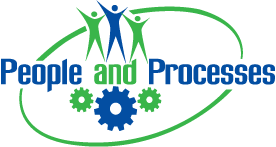 There is so much similarity in all that we do within the Maintenance Planning and Scheduling world that compares to other separate and distinct functions. Let me explain. Borrowing from Root Cause Analysis process methods, I trust you are familiar with the Ishikawa diagrams (also called fish bone diagrams or cause-and-effect diagrams). These diagrams are one method that is used for product design, quality defect avoidance or variation, or to identify factors that lead to some event, hence the use in Root Cause Analysis.
There is so much similarity in all that we do within the Maintenance Planning and Scheduling world that compares to other separate and distinct functions. Let me explain. Borrowing from Root Cause Analysis process methods, I trust you are familiar with the Ishikawa diagrams (also called fish bone diagrams or cause-and-effect diagrams). These diagrams are one method that is used for product design, quality defect avoidance or variation, or to identify factors that lead to some event, hence the use in Root Cause Analysis.The categories typically include:
- Man (people)
- Methods: How the process is performed and the specific requirements to perform the tasks, including time estimates.
- Machines: Any equipment, tools etc. needed to do the job
- Materials: Consumables, parts required
- Measurements: Data generated from the process
All of these items combine together to create some output or event. In the case of Maintenance Planning and Scheduling, hopefully they combine to maintain or restore the reliability of equipment as an example. See in all we do, it's important to remember that every product i.e. maintaining equipment is the result of a process. Let's break them down individually for Maintenance Planning and Scheduling,
- Man - People or staffing, which crafts, skill requirements, number of people, contractors or vendors.
- Methods - The job plan task steps and sequence. Items like permits, manuals, and so forth.
- Machines - What special tools, man lift, ladder, etc.
- Materials - What consumables or parts do I need to restore the equipment
- Measurements - What do we need to know to improve the job plan, or in the case of a condition-based monitoring task, take measurements to find something in act of failing to allow planned restoration?
Interestingly, all of these items roll up to complete a great the Job Plan and Job Package that should be created by the Maintenance Planner. If I didn't have time to complete all of these items, which three should I focus on first to ensure that I could drive craft effectiveness? From a Maintenance Scheduling perspective, I need the manpower requirements, estimated hours, and the materials.
Get more information on how to improve your maintenance planning and scheduling processes or learn how we guide you to success in this process. There you will find our training courses, planner coaching, assessment, and more resources.
But it can't stop there. The only way that's effective is that I have a continuous improvement loop that relies on the feedback of the technicians to improve the job plan.Going back to the bigger picture, what other M's might you add?
In following articles, I'll integrate your feedback into a more detailed explanation of each of the Fishbone M's along with comments on cause and effects.
Speak soon, Jeff
